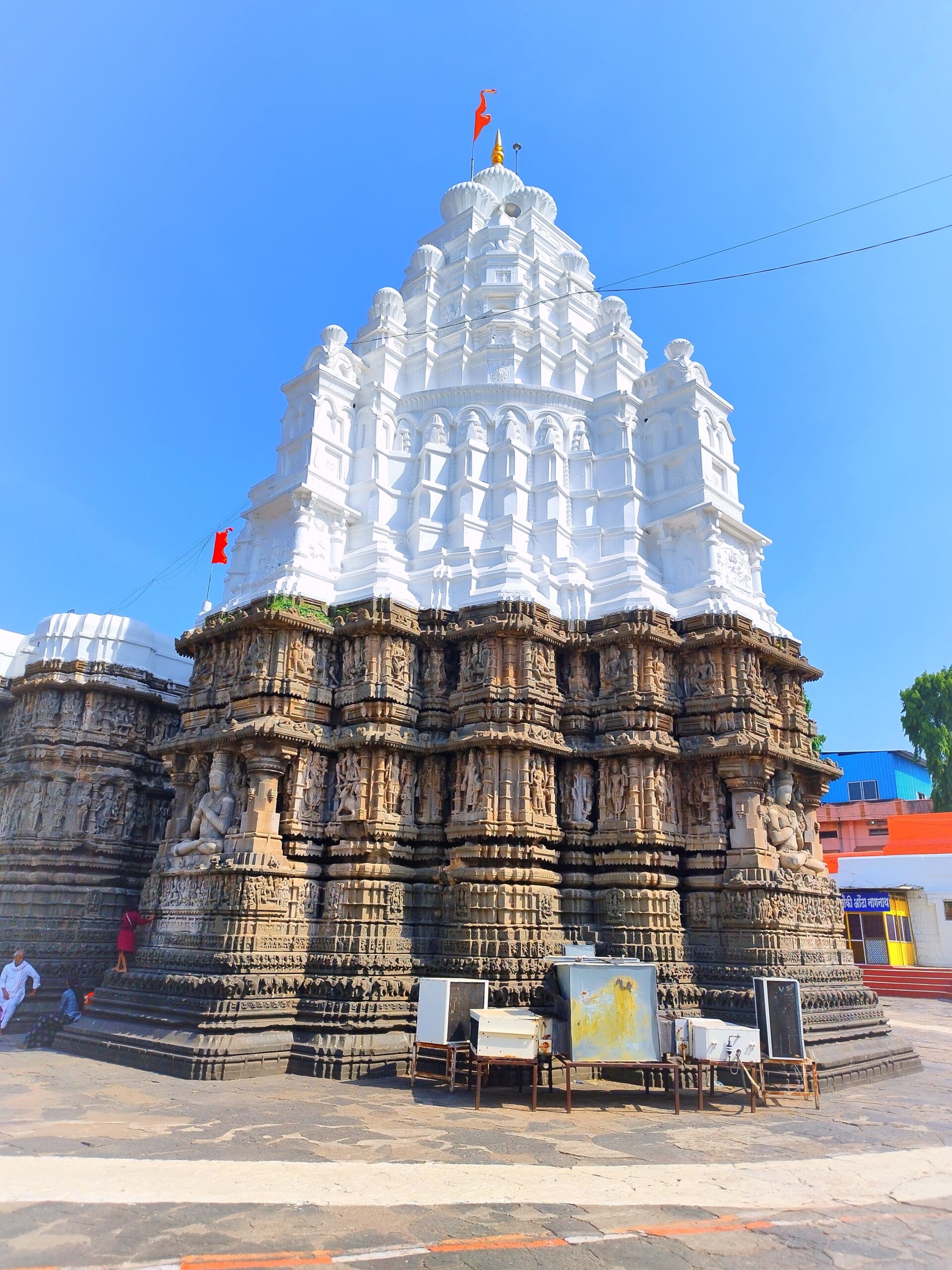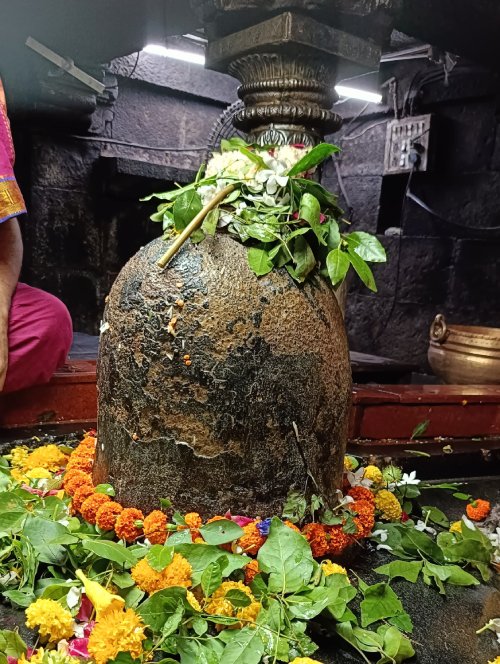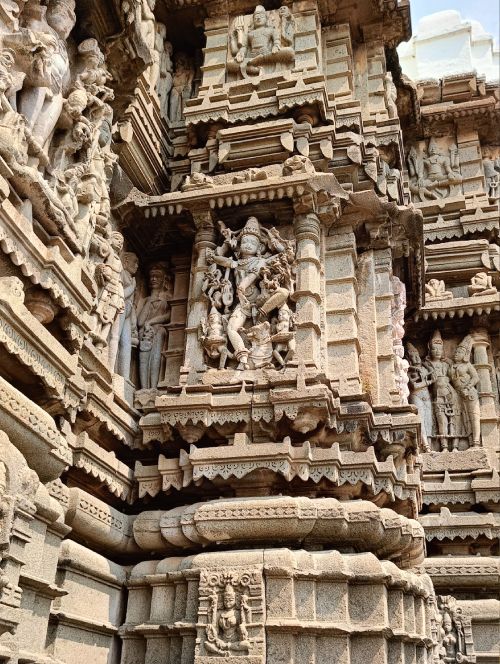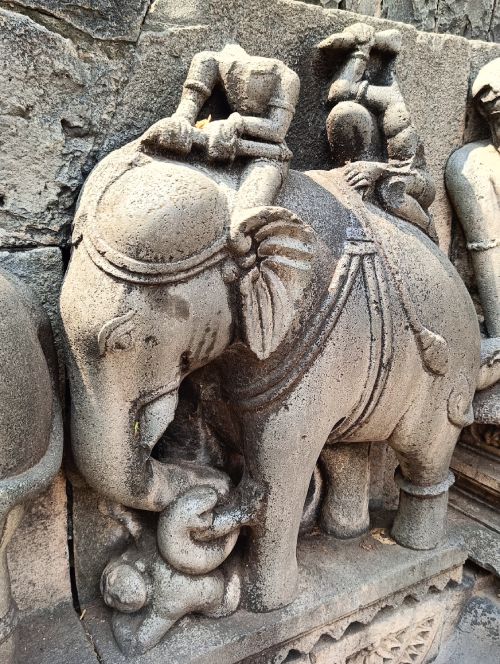About Us

Aundha Nagnath Temple
Temple Overview
The Aundha Nagnath Temple or Nageshwar Jyotirling (one of the 12 Jyotirlinga Temples) in Hingoli, Maharashtra, is dedicated to Lord Shiva, also known as Lord Nagnath in this region. It is believed that Dharmraj (Pandav’s eldest son) built this beautiful temple while they were expelled from Hastinapur for 14 years.
It is widely assumed that the Nagesh Linga, or Jyotirlinga, is the Adhya, or first Jyotirlinga on Earth. Devotees believe that praying at this temple will protect them from all forms of poison. Because of its association with snakes, many people believe that this Linga is extremely powerful and capable of neutralizing the harmful effects of any poison. Numerous devotees have reported seeing snakes with open hoods guarding the Linga.

The Story Behind Nageshwar Jyotirling
Saint Namdev was an excellent poet. He once went a long way in search of a Guru. He arrived at Aundha Nagnath and met his Guru, Visoba Khechar. His Bhajan and Kirtana interrupted the pandits’ prayers and rituals. As a result, he moved to the temple’s backside. Lord Shiva is said to have been moved by his melodious voice, and the entire temple gravitated towards him.
Since then, the temple has remained unchanged in his memory, but the cow Nandi has remained in the back. It’s interesting to note that the Nandi statue is always placed in front of the Jyotirlinga to draw people’s attention to God. Saint Namdev’s name is mentioned in the great Sikhism book, Guru Granth Sahib. That is why Sikhs also visit the Aundha Nagnath Jyotirlinga in Maharashtra.

History of Nageshwar Jyotirling
In the thirteenth century, the Yadavas of Devagiri established the Honda Nagnath mandir, also known as the Aundha Nagnath Temple. Nonetheless, its origin is thought to be in the Pandava era (3229 BCE). According to ancient texts, Lord Yudhisthira built this supernatural structure while in exile with the other four Pandavas and their wife, Draupadi, for 12 years.
During the Mughal reign, many invaders, particularly Aurangzeb, attempted to destroy the temple. However, the associated storybooks state that no one can completely destroy the temple. According to legend, a swarm of bees attacked the Mughal king and his men, who eventually gave up and failed in their mission. The damage did, however, have an effect on the structure of the Jyotirlinga, which was later repaired by Rani Ahalyabai Holkar, Queen of the Maratha Malwa Kingdom. Rani Ahalyabai rebuilt and renovated many temples that had been destroyed. As a result, a white statue of her has been erected outside the temple to celebrate her honour and glory.

Nageshwar Jyotirlinga Temple Craftsmanship
The history and craftsmanship of Shri Nageshwar Jyotirlinga Temple is very ancient and unique. This temple is about 5500 years old, which makes it one of the most ancient and sacred sites of Hinduism. The craftsmanship above the temple is amazing, in which an excellent example of the architecture of that time can be seen. The carvings and idols of gods and goddesses carved on the stones are extremely artistic and religiously important. A deep impression of rich culture and tradition is seen in this craft, which provides a spiritual and aesthetic experience to the devotees.
The craftsmanship of Shri Nageshwar Jyotirlinga Temple is really amazing. This temple is not only a center of religious faith, but it also presents an excellent example of ancient Indian architecture and craftsmanship.
The engravings, sculptures, and amazing decorations on the walls of the temple are its specialty, which mesmerize the viewers. The sculptures here depict Brahma, Vishnu, Mahesh, and other gods as well as scenes from various mythological stories.
Apart from this, the materials and construction techniques used in the architecture of the temple also make this place special. It is an important place not only for devotees but also for art lovers and history buffs.
Underground Sanctum Sanctorum
The path to visit Lord Shiva in Shri Nageshwar Jyotirlinga Temple is really narrow and small. The main Jyotirlinga is located in the sanctum sanctorum of the temple, which is underground. Visitors have to go to the sanctum sanctorum through this narrow path, which is of historical and religious significance as well as a feature of the structure.
In old temples, narrow paths or small gates were often built so that devotees could bow down and have darshan of the Lord with reverence. This path can be seen as a symbol of devotion and humility, where a person gets an opportunity to go closer to God by abandoning his ego.
Nageshwar Jyotirlinga Temple Runmochak Kund
Runmochan Kund has special religious significance in Shri Nageshwar Jyotirlinga Temple. This Kund is a holy place for the devotees, where bathing is believed to destroy sins and attain salvation.
It is said that bathing in Runmochan Kund resolves all the sorrows and debts of the devotees. It is especially worshiped by those devotees who are facing any particular crisis or difficulty.
The environment around this Kund also helps devotees to experience mental peace and divinity. This feature of Runmochan Kund makes it an important part of the temple complex, where devotees can take a holy bath and pray for peace of mind and devotion.
Shri Nageshwar Jyotirlinga Abhishek Importance
Abhishekam on Shri Nageshwar Jyotirlinga holds importance and is considered as a major worship method. Abhishekam means worshipping the idol of Lord Shiva or Shivlinga by offering water, milk, honey, sandalwood, Belpatra, Bhasma, rice and various holy substances. Its religious and spiritual significance is as follows:
1. *Peace and Prosperity*: Abhishekam with water or milk on Shivlinga brings mental peace and prosperity in life.
2. *Destruction of Sins*: It is believed that by performing Abhishekam of Shivlinga, the sins of previous births and this birth are destroyed, and the person gets the path to attain salvation.
3. *Shiva’s Grace*: Performing Abhishekam brings special grace of Lord Shiva, which brings happiness, peace and progress in the life of devotees.
4. *Religious Tradition*: Abhishekam is done as per religious rules and regulations, which is an important part of the rituals of Hinduism. It is specially described in the Puranas and scriptures.
5. *Positive Energy*: Abhisheka spreads positive energy in the environment and maintains peace and happiness in the home.
Therefore, Abhisheka of Lord Shiva is an important means for Shiva devotees to attain spiritual advancement, attain salvation, and bring positivity in life.
Ahilyabai Holkar Temple Restoration
It is believed in the history of Shri Nageshwar Jyotirlinga Temple that the Mughal ruler Aurangzeb damaged the temple. But the temple was rebuilt by Ahilyabai Holkar, the queen of the Maratha Empire. Ahilyabai Holkar is known for the reconstruction and preservation of the 12 major Jyotirlinga temples of India. She rebuilt the Shri Nageshwar Jyotirlinga Temple along with many Jyotirlingas. The upper white part of this temple is also believed to have been built by her.
Ahilyabai’s contribution was not only in preserving religious heritage, but she also revived the development of these temples and their importance in the society.
Hariharatmak Jyotirlinga
Hari Haratmak Jyotirlinga Shri Nageshwar Jyotirlinga represents the union of Lord Shiva and Lord Vishnu. This unique union is an important symbol in Indian religion and culture, where both Shiva and Vishnu are worshipped in a combined form.
The upper part of the Jyotirlinga is of Reti Shiva, which represents the power and divinity of Lord Shiva, while the lower part is of Shaligram Vishnu, which symbolizes the grace and protection of Lord Vishnu.
This feature gives devotees a unique experience of worshiping both the deities, and thus this temple becomes a center of religious unity and devotion. This shows that both Shiva and Vishnu have a place of utmost importance in Indian culture, and their union holds a special religious significance for the devotees.
Due to the consecration of Jyotirlinga Shri Nageshwar as Shiva and Vishnu, devotees are allowed to perform several special religious rituals.
1. *Full Parikrama*: Devotees can perform a full Parikrama of this Jyotirlinga, which symbolizes reverence and devotion towards them. By doing this parikrama, devotees experience mental peace and spiritual advancement.
2. *Tirtha Prasad Grahan*: Accepting the tirtha prasad of the Lord also holds special significance. It is a medium for devotees to receive divine blessings and it deepens their devotion and faith.
3. *Tulsi Offering*: Following the tradition of offering Tulsi every day is also very beneficial. Tulsi is considered sacred and religious, and offering it to the Lord is believed to fulfill the wishes of the devotees.
Through all these actions, devotees can experience positivity, peace and devotion in their lives. These features make this Jyotirlinga even more important and unique.